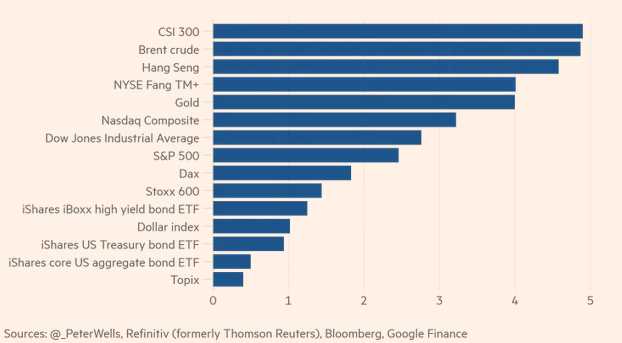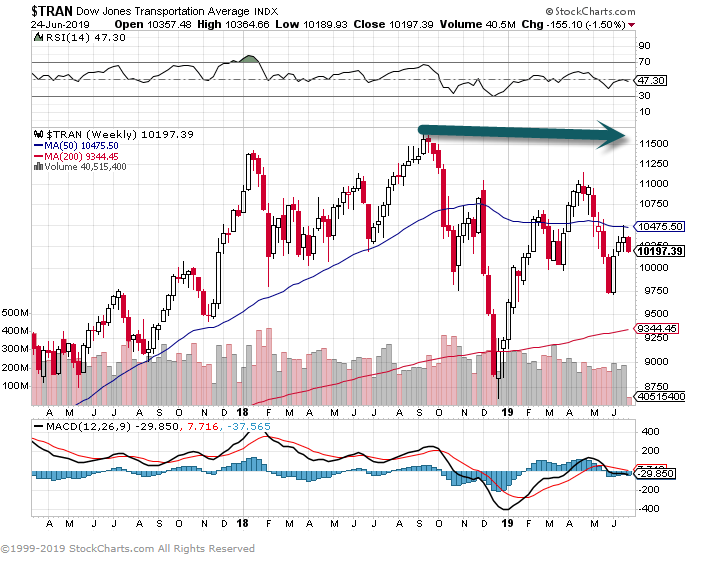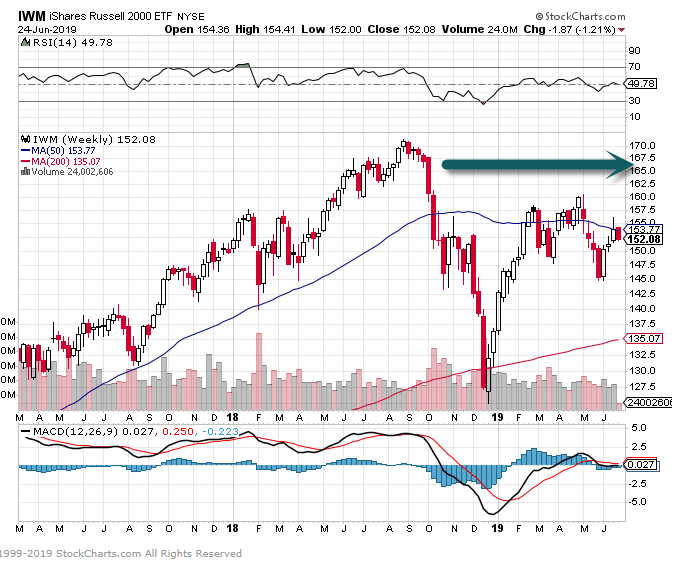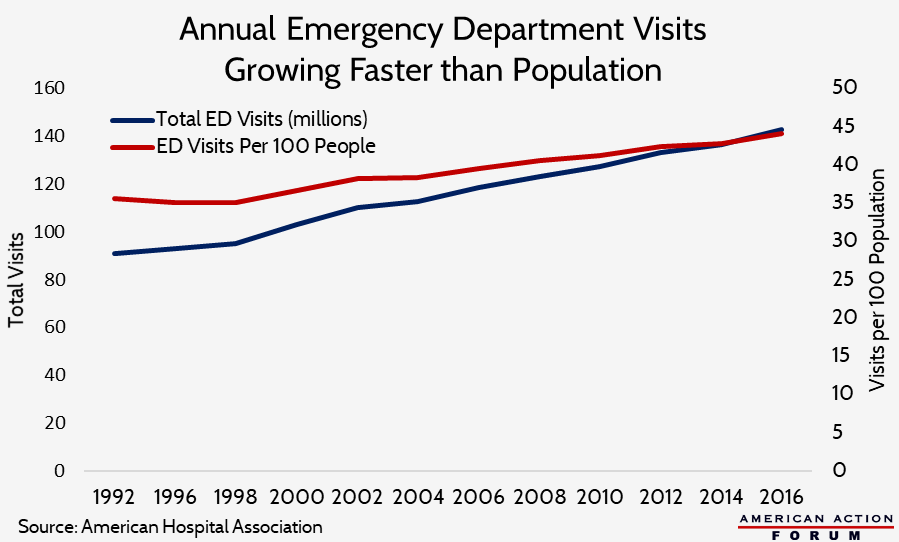1.Yield Curve Officially Inverted One Month….

2.The Inversion is Shallow..What Does that Mean?
How Deep Is The Inversion?
Regarding inversion’s depth, the news is actually a little better. The inversion of the yield curve is currently shallow compared to history. Currently the spread between the 10 year and 3 month yields is -0.28%. That translates into broadly a 1 in 3 chance of recession within a year. That may sound like a lot but it’s not actually too high when you consider that most economists would say there’s at least a 10% to 20% chance that an unexpected shock could cause a recession in any given year, regardless of how things look in the U.S. right now. We’d need to see the gap between bond yields get about four times as big before the model signals that recession within a year is more likely than not per the chart below. It is the lack of a deep inversion that supplies most ammunition for those who think this time is different for the yield curve signal. However, it may also be a function of the low interest-rate environment globally.
The chart below shows the chance of recession related to the percentage point difference of the 3 month less the 10 year yield. Note that the model uses the average difference in yield over the quarter, not the difference on a single day.

The chance of a recession in a year based on the yield curve
ESTRELLA AND MISHKIN, NY FED
To think of it another way, with the current level of inversion, if we held everything else constant, at a simplistic level, the Fed could cut rates twice and get the yield curve back to its traditional upward slope. As we’ll see below, that’s actually what the futures markets are starting to expect. As such maybe the current inversion will be gone by the end of 2019. By doing this the Fed would essentially be rolling the clock back to where their policy rate was in summer of 2018.
Three Assessments Of Yield Curve Inversion, None Are Encouraging For The EconomySimon Moore
3.Another Way to View U.S. Oil Independence.

Trump threatens to lessen US security role in Strait of Hormuz, unveils sanctions
AuthorBrian ScheidMeghan Gordon
https://www.spglobal.com/platts/en/market-insights/latest-news/shipping/062419-trump-threatens-to-lessen-us-security-role-in-strait-of-hormuz
4.90% of Chinese Oil Runs Thru Straight of Hormuz
@RealDonaldTrump: China gets 91% of its Oil from the Straight, Japan 62%, & many other countries likewise. So why are we protecting the shipping lanes for other countries (many years) for zero compensation. All of these countries should be protecting their own ships…


https://www.csis.org/analysis/energy-fact-opinion-chinas-net-oil-import-problem
5.Oil and Gold Were Up the Most Last Week on Iran News and Dollar Weakness.

Oil and Gold were among the top performers last week as Iranian angst ramped
and the $ dropped on Fed Headers
From Dave Lutz at Jones Trading.
6.Two Major Indices Never Came Close to New Highs.
Dow Transports Well Below Highs.

Small Cap Stocks Russell 2000 Not Close to New Highs.

7.The U.S. has 140 Million Emergency Room Visits Per Year.


https://www.commongroundhealth.org/unnecessary-emergency-department-visit-rate-by-geography
8.2 Signs That Instantly Identify Someone With Bad Leadership Skills
The very traits we thought led to leadership success no longer hold true, according to research.
By Marcel SchwantesFounder and Chief Human Officer, Leadership From the Core@MarcelSchwantes
Egomaniacs are on the rise, especially within the leadership ranks of companies across the world, which is detrimental to good business outcomes.
Leadership and management expert and bestselling author,Ken Blanchard warns us:
The ego is one of the biggest barriers to people working together effectively. When people get caught up in their egos, it erodes their effectiveness. That’s because the combination of false pride and self-doubt created by an overactive ego gives people a distorted image of their own importance. When that happens, people see themselves as the center of the universe and they begin to put their own agenda, safety, status, and gratification ahead of those affected by their thoughts and actions.
The challenge is keeping such self-centered leaders and managers from taking their teams or companies down a path toward self-destruction. After all, we speak of personality characteristics–some of which border on personality disorders.
So how can we curtail the mechanisms that keep feeding egomaniacs into the higher echelons of corporate society? The answer is not so simple. It will require a systemic shift not only in our leadership selection processes but in our collective minds.
Stop rewarding two typical male traits
What we think true leadership is is far from the truth. Psychologist Tomas Chamorro-Premuzic, chief talent scientist at ManpowerGroup and a professor of business psychology at University College London and at Columbia University, points out that we’ve historically equated leadership with personality traits statistically more likely to be found in men: confidence and charisma.
In his phenomenal and alarming book, Why Do So Many Incompetent Men Become Leaders? (And How to Fix It), he explains how these same two characteristics can later backfire as overconfidence, narcissism, and even psychopathy, resulting in disaster.
Here’s why you should not reward people–men or women alike–with the two masculine traits we have historically elevated as “leadership material” since the industrial age.
- How confidence will backfire.
Confidence is often disguised and falsely perceived as a leadership competency. In my interview with Chamorro-Premuzic on the Love in Action podcast, he points out that while most people look at a confident person and assume the person is also competent, there is in fact no relationship between confidence and competence.
Confidence is how good you are at something. Confidence is how good you think you are at something. “Decades of research suggest that on virtually any dimension of ability, we tend to assume that we are better than we actually are,” says Chamorro-Premuzic
While confidence is good to have, overconfident leaders overate their ability and job performance, and are more prone to reckless decisions because they are immune to negative feedback.
- How charisma will backfire.
Some of the most successful leaders in the world are known for their charisma. But while charisma has been associated with extroversion, drive, and even more physically-attractive features, it is hard to define and measure, and it exists in the eye of the beholder.
According to Chamorro-Premuzic, “Charisma clouds people’s evaluations of how leaders actually perform. Rather than being objective, we are less judgmental about leaders’ performance when we see them as charismatic, and we are more critical when we don’t.”
He also points out that charisma, when combined with narcissism and psychopathy, is a lethal combination. However, research has shown when followers have more information on a leader, the importance of charisma declines.
Whom to reward, instead, for leadership roles.
According to Chamorro-Premuzic, the best leaders combine IQ (intellectual intelligence) with EQ (emotional intelligence), which enable personal effectiveness and self-awareness. While both males and females are equal when it comes to IQ, studies show that women have greater EQ and, in general, perform better as leaders.
Chamorro-Premuzic also points out that a high EQ is also associated with people-centered leaders who are more humble, honest and ethical. To his point, the shift to focusing on selecting and developing more leaders with these traits–as competencies–would also help correct the gender imbalance in higher leadership ranks, since the underlying issue remains that we, as a society, lack valuing these traits in the leaders we choose.
To bring this discussion home, it’s crucially important to remember that the very traits that propel more men into leadership are the same traits that get them fired. In other words, what it takes to get a leadership role are nearly opposite of what it takes to do it well and keep the role.